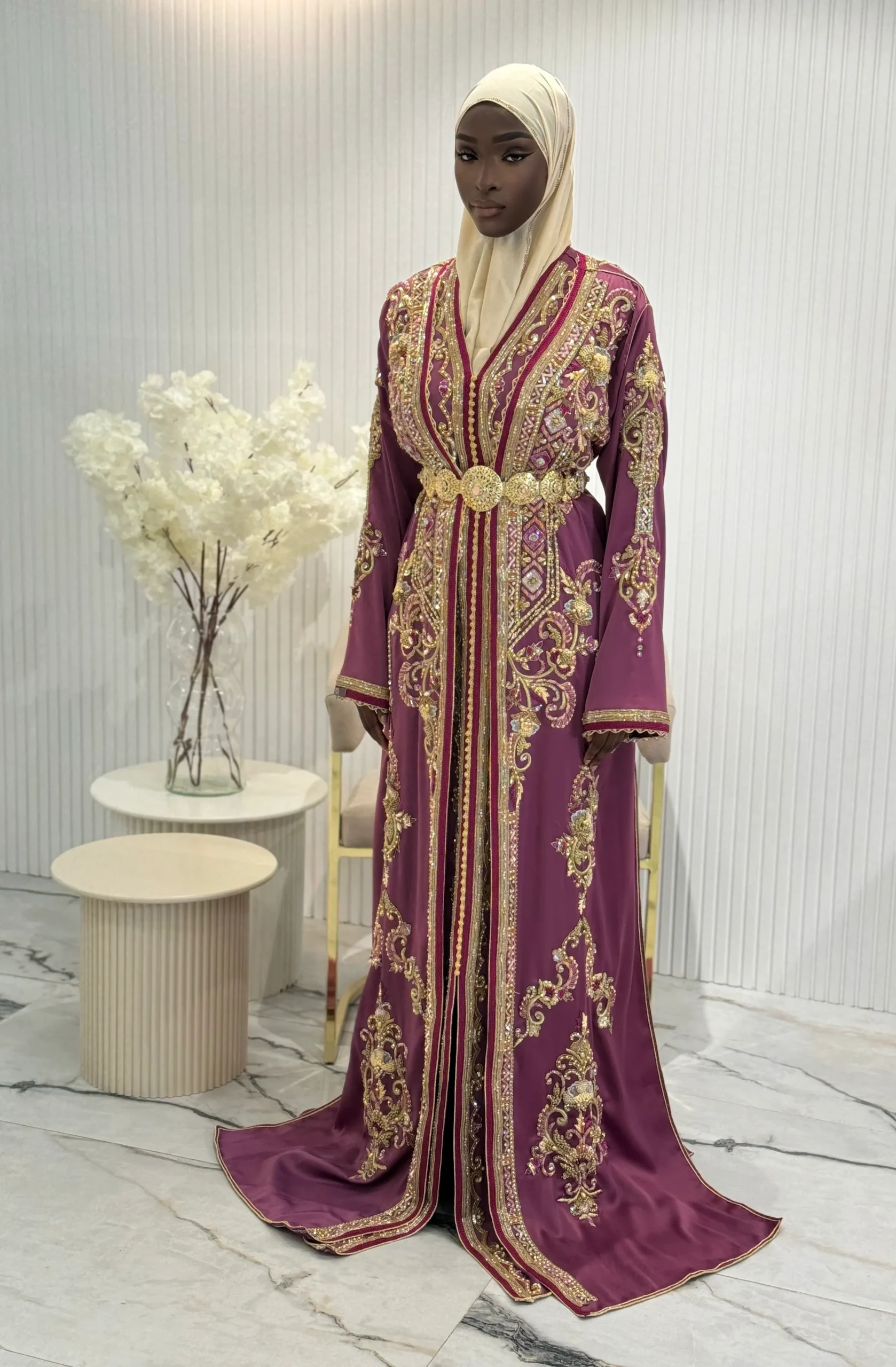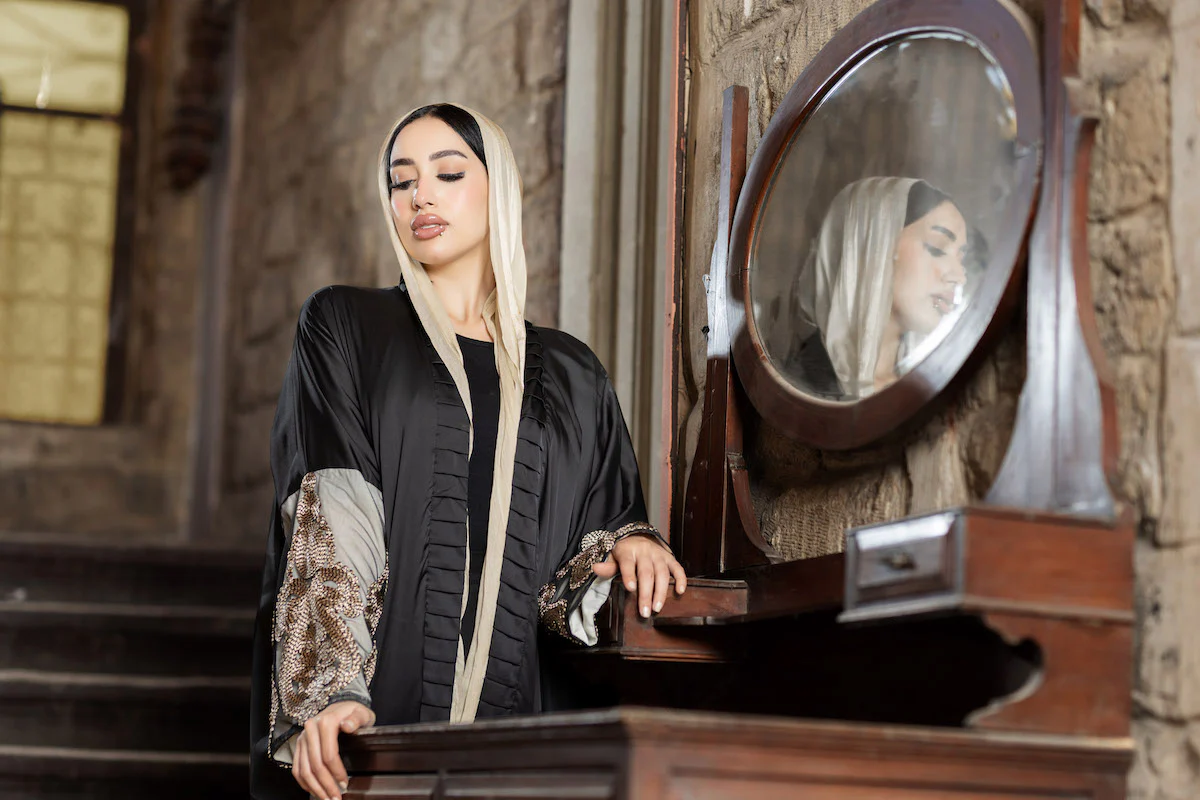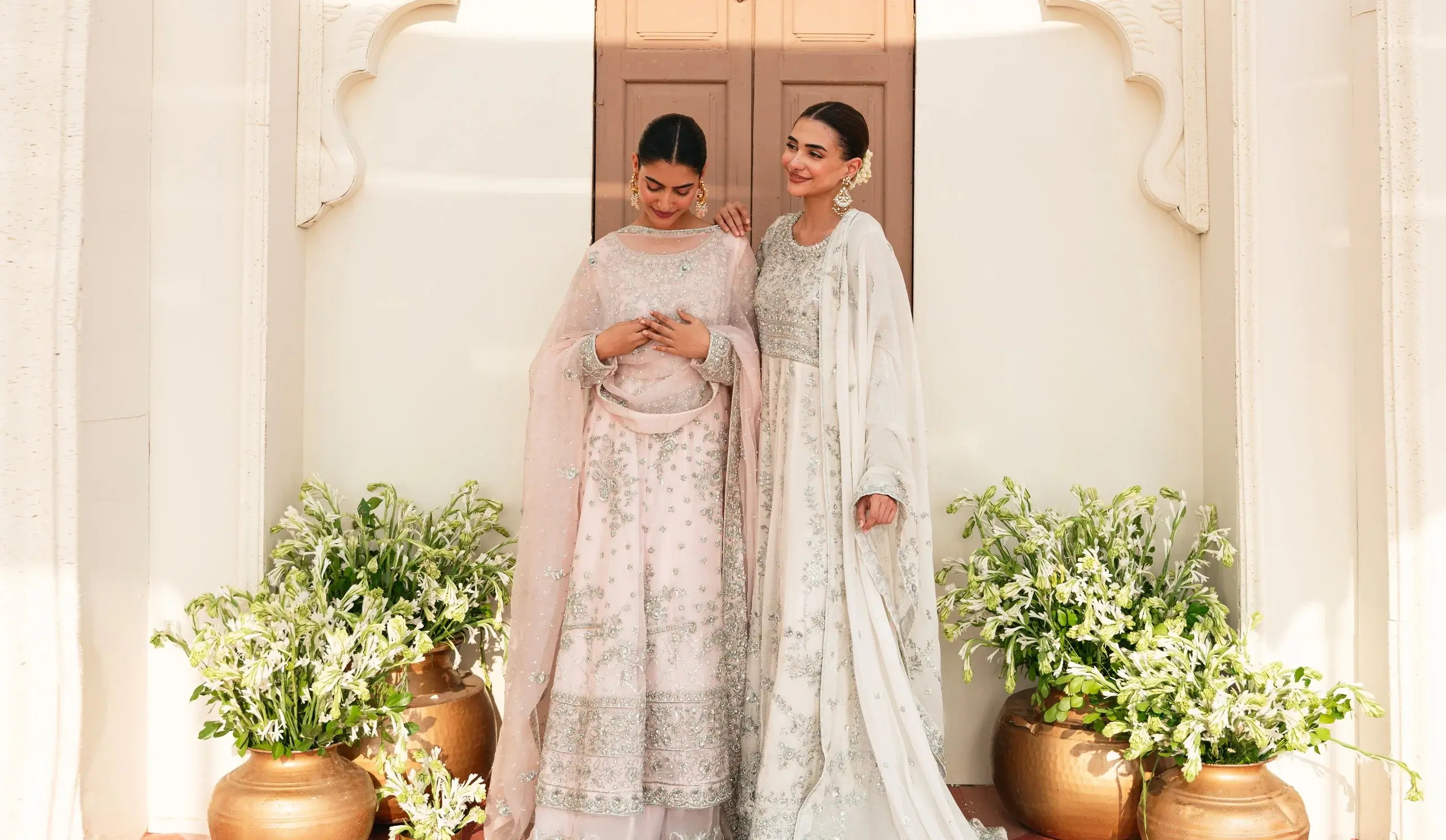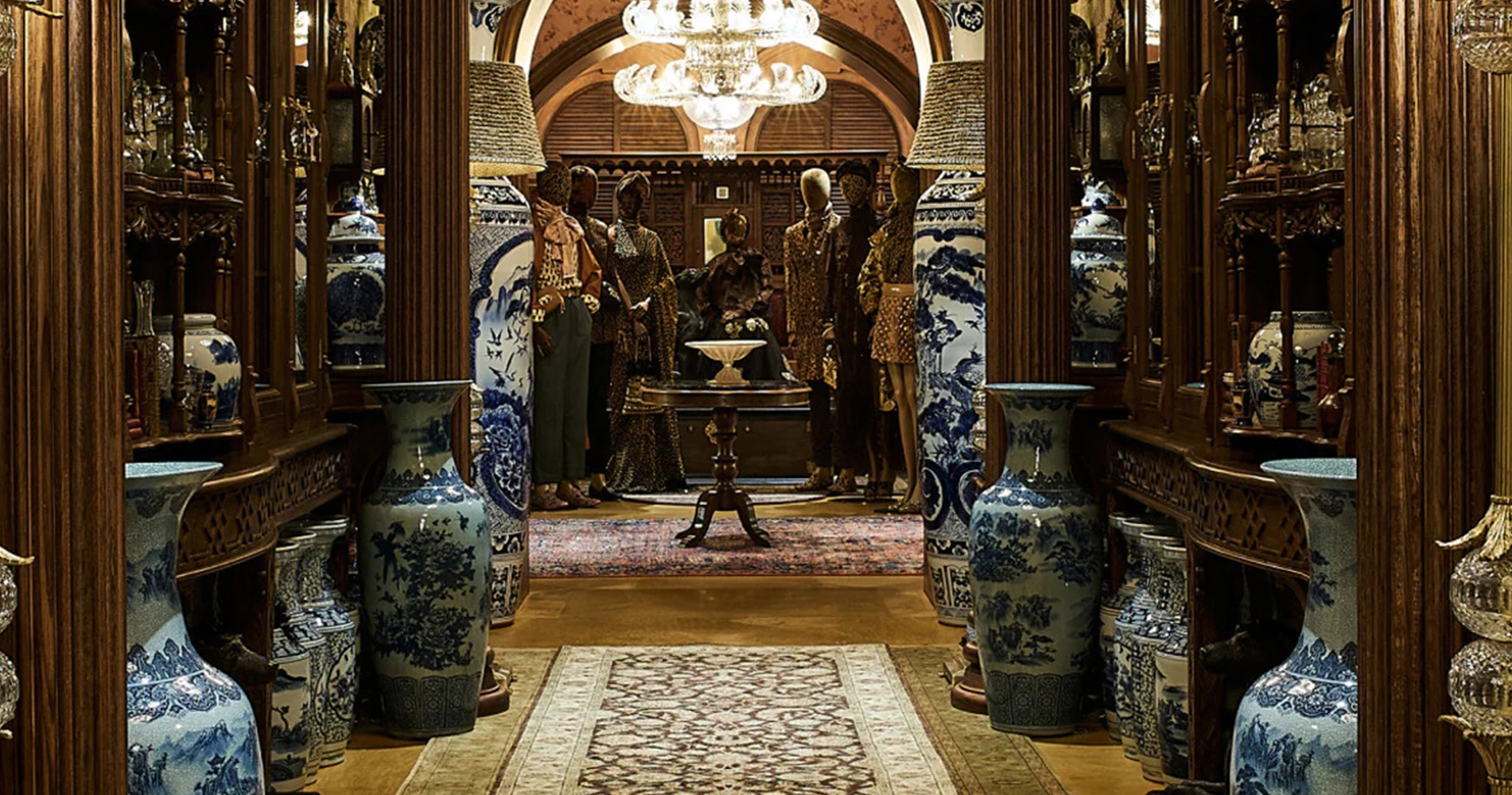The Arabian kaftan is more than just a garment, it’s a piece of history, culture, and artistry that has traversed time, borders, and fashion trends. Known for its rich colors, intricate embroidery, and luxurious fabrics, the kaftan symbolizes Arabian elegance. Originating in ancient Mesopotamia, the kaftan has evolved through centuries and across regions, retaining its essence while embracing contemporary adaptations.
Whether worn as a traditional piece or styled with modern flair, the Arabian kaftan continues to captivate fashion enthusiasts worldwide. This article will explore the history, craftsmanship, styling, and significance of the Arabian kaftan in modern fashion.
The Origins and History of the Arabian Kaftan
The kaftan has deep-rooted origins dating back to Mesopotamia, the cradle of civilization, over 2,000 years ago. Originally, it was a long robe made for comfort and practicality, worn by both men and women across the ancient Middle East.
As the garment spread through the Ottoman Empire, Persia, and North Africa, it took on various forms and regional styles. Each region added its unique features, from intricate stitching to luxurious fabrics and bright colors.

The Arabian Peninsula adopted the kaftan and transformed it into a garment that reflects the Arabian heritage and culture. Worn by royal families and nobles, the kaftan became a symbol of status, especially when crafted with ornate embellishments and fine textiles.
In countries like Morocco, where the kaftan is considered a national garment, it’s worn during special events, weddings, and celebrations. In the Arabian Gulf, the kaftan also holds cultural significance, often worn during Ramadan and Eid, as well as at weddings and cultural ceremonies.
The Anatomy of an Arabian Kaftan
An Arabian kaftan’s allure lies in its craftsmanship, luxurious materials, and intricate details. Traditionally, kaftans are long, flowing garments with wide sleeves, often reaching the ankles. Their loose fit makes them comfortable and practical, especially in hot climates. Key elements that characterize the Arabian kaftan include:
- Fabric: The fabric of a kaftan varies depending on the season and occasion. Lightweight materials like silk, chiffon, and satin are commonly used for eveningwear, while cotton and linen are more popular for casual, everyday kaftans. Brocade and velvet are also common choices, especially in cooler climates or for winter events.
- Embroidery and Embellishments: A hallmark of the Arabian kaftan is the intricate embroidery, usually hand-stitched with gold or silver thread. Beading, sequins, and gemstones are also popular embellishments, often adorning the neckline, cuffs, and borders.
- Color Palette: Arabian kaftans come in a wide array of colors, from classic black and white to vibrant hues like emerald green, royal blue, deep red, and golden yellow. Color choices often reflect the occasion, with brighter shades preferred for weddings and celebrations, while softer pastels or neutral tones are more suitable for casual wear.
- Neckline and Sleeves: Arabian kaftans often feature V-shaped or rounded necklines, adding to their elegance. Sleeves are typically wide and flowy, a characteristic that distinguishes the kaftan from other traditional garments like the abaya.
Types of Arabian Kaftans
Arabian kaftans come in a range of styles, each with its own cultural significance and stylistic elements. Some of the most popular types include:
- Moroccan Kaftan: Known for its elaborate designs and fine detailing, the Moroccan kaftan is often crafted with layers, embroidery, and metallic threading. These kaftans are commonly worn during weddings and special events.
- Saudi Arabian Kaftan: The Saudi version of the kaftan is typically more conservative, often paired with an abaya. It has a simpler design compared to Moroccan styles, but it remains elegant and sophisticated, usually adorned with subtle embroidery.
- Algerian Kaftan: In Algeria, the kaftan is popular for its intricate patterns and heavy use of embroidery. It is often worn during weddings, especially by the bride, as part of the traditional attire.
- Tunisian Kaftan: Tunisia’s version of the Kaftan incorporates geometric patterns and vibrant colors. It’s typically worn during traditional celebrations and reflects the country’s unique blend of Arabian and Mediterranean influences.
- Turkish Kaftan: Although not part of the Arabian Peninsula, the Turkish Kaftan has inspired many Arabian styles. Known for its opulent fabrics and bold patterns, it’s particularly popular in Ottoman-inspired fashion.
How to Style an Arabian Kaftan
Styling an Arabian kaftan allows for both creativity and personal expression. Here are some tips for achieving the perfect look:
- Accessorize Thoughtfully: A kaftan can be styled with traditional jewelry, like chunky bracelets, statement necklaces, or chandelier earrings. For a more understated look, opt for delicate jewelry that complements the kaftan’s colors and embellishments.
- Use a Belt: Adding a belt can instantly change the silhouette of a kaftan, transforming it from a flowing gown to a cinched dress that accentuates the waistline. Many prefer a metallic or jeweled belt for added glamour, especially for formal occasions.
- Layering with a Jacket or Abaya: In cooler climates, layering a kaftan with a tailored jacket or an open abaya can add sophistication to the outfit while keeping the look traditional.
- Shoes: For a formal event, pair the kaftan with heels or embellished sandals that add height and elegance. Flat sandals or mules work best for a casual look, especially if the kaftan is floor-length.
- Hairstyles and Makeup: An Arabian kaftan pairs well with a variety of hairstyles, from elegant updos to loose curls. Makeup can also elevate the look; smoky eyes or bold lips work well with kaftans, especially for evening events.

Arabian Kaftans in Celebrations and Ceremonies
Arabian kaftans hold a special place in celebrations and ceremonies across the Middle East and North Africa. In many cultures, brides wear a traditional kaftan during one of the wedding ceremonies. The kaftan serves as a symbol of heritage and tradition, connecting the bride to her roots. For instance, Moroccan brides often wear a “Takchita,” a two-piece kaftan that includes a layer known as the “DFA,” adorned with heavy embroidery and embellishments.
During the holy month of Ramadan and the celebrations of Eid, Arabian women often wear kaftans as a part of family gatherings and festive events. The kaftan is also a popular choice for henna nights, where women wear vibrant kaftans decorated with henna patterns that match the intricacies of the garment.
Sustainable and Ethical Fashion with the Arabian Kaftan
With the rise of sustainable fashion, Arabian kaftans are being crafted with a renewed focus on ethical production. Many designers are now using natural dyes, organic fabrics, and hand-embroidery techniques that support local artisans. Some sustainable brands have started producing kaftans in small batches, focusing on quality over quantity, ensuring each piece is unique and ethically crafted.
Buying a kaftan from sustainable sources not only supports ethical fashion practices but also preserves the cultural heritage associated with the garment. Consumers are encouraged to support brands that prioritize fair wages, traditional craftsmanship, and eco-friendly materials, contributing to a fashion industry that values both beauty and responsibility.








